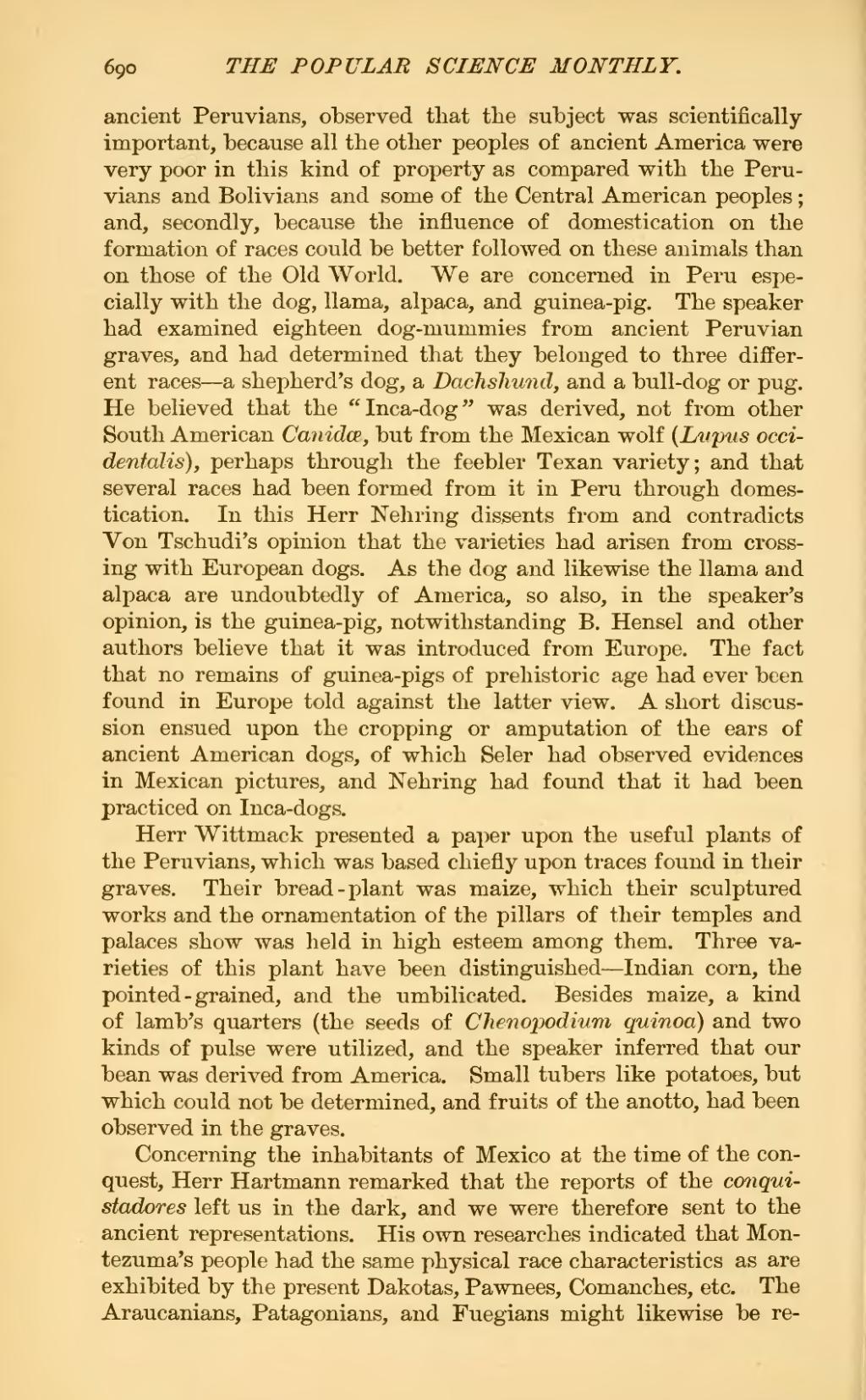ancient Peruvians, observed that the subject was scientifically important, because all the other peoples of ancient America were very poor in this kind of property as compared with the Peruvians and Bolivians and some of the Central American peoples; and, secondly, because the influence of domestication on the formation of races could be better followed on these animals than on those of the Old World. We are concerned in Peru especially with the dog, llama, alpaca, and guinea-pig. The speaker had examined eighteen dog-mummies from ancient Peruvian graves, and had determined that they belonged to three different races—a shepherd's dog, a Dachshund, and a bull-dog or pug. He believed that the "Inca-dog" was derived, not from other South American Canidæ, but from the Mexican wolf (Lupus occidentalis), perhaps through the feebler Texan variety; and that several races had been formed from it in Peru through domestication. In this Herr Nehring dissents from and contradicts Von Tschudi's opinion that the varieties had arisen from crossing with European dogs. As the dog and likewise the llama and alpaca are undoubtedly of America, so also, in the speaker's opinion, is the guinea-pig, notwithstanding B. Hensel and other authors believe that it was introduced from Europe. The fact that no remains of guinea-pigs of prehistoric age had ever been found in Europe told against the latter view. A short discussion ensued upon the cropping or amputation of the ears of ancient American dogs, of which Seler had observed evidences in Mexican pictures, and Nehring had found that it had been practiced on Inca-dogs.
Herr Wittmack presented a paper upon the useful plants of the Peruvians, which was based chiefly upon traces found in their graves. Their bread-plant was maize, which their sculptured works and the ornamentation of the pillars of their temples and palaces show was held in high esteem among them. Three varieties of this plant have been distinguished—Indian corn, the pointed-grained, and the umbilicated. Besides maize, a kind of lamb's quarters (the seeds of Chenopodium quinoa) and two kinds of pulse were utilized, and the speaker inferred that our bean was derived from America. Small tubers like potatoes, but which could not be determined, and fruits of the anotto, had been observed in the graves.
Concerning the inhabitants of Mexico at the time of the conquest, Herr Hartmann remarked that the reports of the conquistadores left us in the dark, and we were therefore sent to the ancient representations. His own researches indicated that Montezuma's people had the same physical race characteristics as are exhibited by the present Dakotas, Pawnees, Comanches, etc. The Araucanians, Patagonians, and Fuegians might likewise be re-
